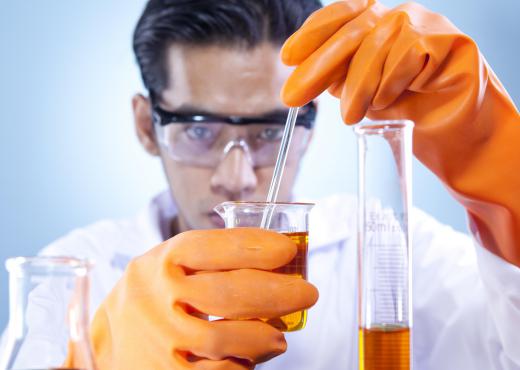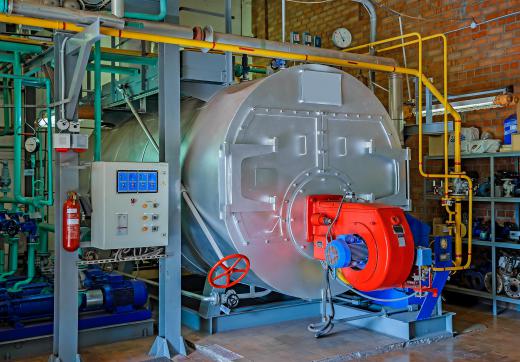What Is Heat of Vaporization?
The heat of vaporization, ΔHvap, sometimes called the enthalpy of vaporization, is the amount of energy necessary to convert a liquid into vapor at the boiling point. This energy is independent of any component resulting from a rise in temperature. The heat of vaporization is often measured at atmospheric pressure and ordinary boiling point, although that is not always the case. Since the boiling point of any liquid varies with the surrounding pressure and the heat of vaporization depends upon that pressure as well, a liquid’s heat of vaporization must be temperature-dependent. Two-dimensional (2-D) graphs depict a simple, near-parabolic relationship for most common liquids.
There are many influences that must be considered if the process of boiling, or vaporization, is to be completely understood. Among these are the intermolecular binding forces such as the van der Waal’s forces — which include at the very least London dispersion forces — and the much stronger hydrogen bonding forces, if applicable. The work necessary in order to expand the gas must be included. Additionally, for the most part, the potential energy of the liquid has been converted into kinetic energy in the gas. It is erroneous to assume that the all of this kinetic energy exists in the form of translational energy; some of it becomes rotational energy and vibrational energy.

At a more basic level, one conceptual model first described in 2006 in the journal Fluid Phase Equilibria is promising. In that model, the empirical data for 45 elements matched well when two assumptions were made: the surface of a liquid is flexible, and a particle uses all its latent energy to break free of the particles blocking its escape — the surface resistance. In this study, the maximum surface area that can hold a particle in its surrounding liquid was used in the calculations. Small deviations between the calculations and reality were explained in terms of approximations, such as the hardball sphere approximation for atoms.

The heat of vaporization is of considerable importance for industrial distillation apparatuses. It is also of importance in situations where vapor pressure must be considered, as in the design and function of steam heating plants. One mathematical expression of special interest in this regard is the Clausius-Clapeyron equation. This equation combines the heat of vaporization with system pressures and temperatures. Using the equation, from one particular temperature and vapor pressure, a second vapor pressure can be determined at another temperature.
AS FEATURED ON:
AS FEATURED ON:












Discussion Comments
@NathanG - I think that would be a safe assumption. In terms of practical application, however, it appears that heat of vaporization wouldn’t be used in random settings.
Rather, it would be confined to environments where the equipment – like distillers and things like that – would be by controlled by specific, controlled variables like air pressure and other things that might affect it.
What’s important to remember is that whether your water ends up as vapor or not, the old law of conservation of energy says that matter can neither be created nor destroyed. So you’d have the same molecules going out as you had going in.
I would have thought that the heat of vaporization energy levels would be strictly dependent on rises in temperature; at least intuitively it seems to be that way.
When I watch my water boil (it doesn’t always boil when I watch it), I see that it boils at a certain point, which I take to be a certain temperature.
Apparently, however, the energy which causes it to begin vaporizing is independent of temperature, according to this article. That’s interesting.
Since it depends on atmospheric pressure, too, then I suppose if I boiled that same pot of water at the top of the mountain it would begin vaporizing at different points then as well.
Post your comments